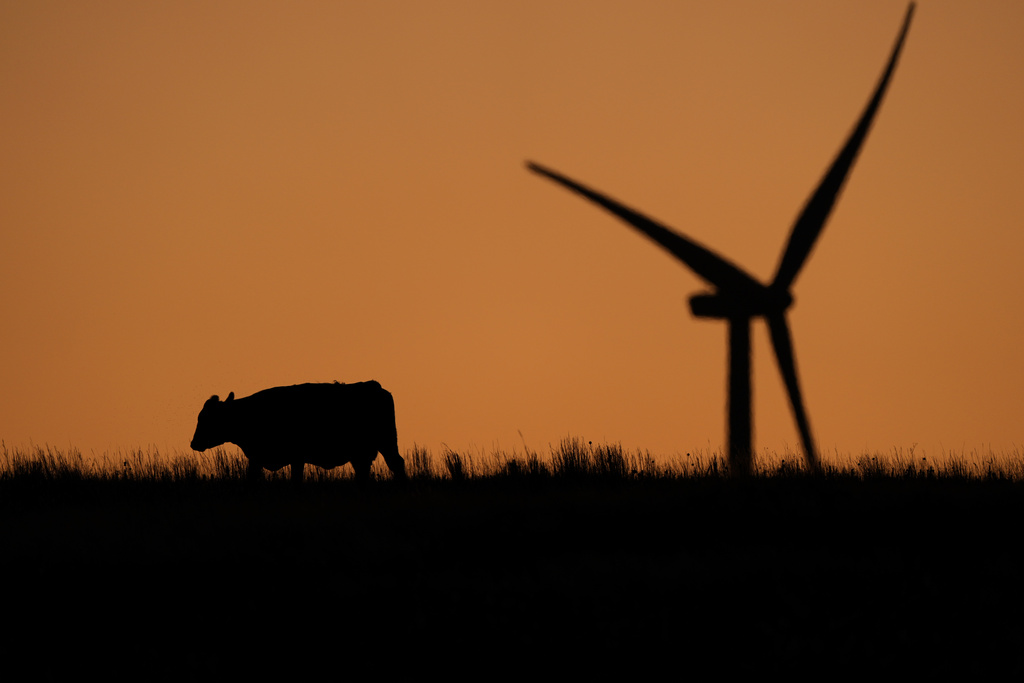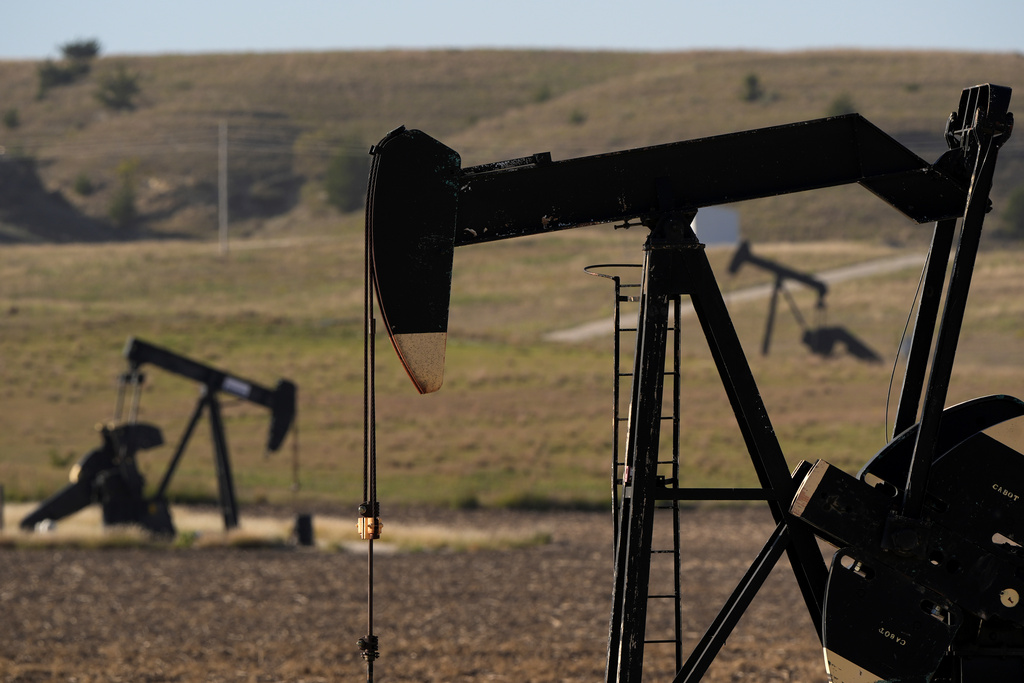Global Warming Could Hit 1.8°C Despite Promised Climate Actions \ Newslooks \ Washington DC \ Mary Sidiqi \ Evening Edition \ The world is on course to warm by 1.8°C (3.2°F) if countries fulfill their climate promises, but this falls short of the Paris Agreement’s goal of limiting warming to 1.5°C, according to the United Nations Emissions Gap Report. Even with aggressive emission reductions, the world is still likely to reach 1.9°C of warming, with catastrophic consequences such as more intense heatwaves, storms, and wildfires. The report urges immediate and unprecedented global action to close the gap between climate pledges and real progress.

UN Report Warns of Global Warming Crisis: Quick Look
- Projected Warming: The world is on track to warm by 1.8°C, but without more aggressive cuts, temperatures could reach 3.1°C by 2100.
- Paris Agreement: The target of limiting warming to 1.5°C is virtually unattainable under current policies.
- Emissions Gap: There is a significant gap between countries’ climate pledges and the actions they are actually taking, particularly among the world’s wealthiest nations.
- Urgency for Action: Immediate emission cuts are crucial to avoid catastrophic climate impacts, according to the report.
- Consequences: Failure to act will lead to worsening climate disasters, including severe droughts, storms, and wildfires.
Deep Look:
A new United Nations report paints a grim picture of the world’s future if more aggressive action isn’t taken to combat climate change. According to the UN Environment Programme’s (UNEP) annual Emissions Gap Report, the planet is on track to warm by 1.8°C (3.2°F) above current levels—1.9°C (3.4°F) if nations only meet their current commitments—by the end of the century, even if countries meet their climate pledges. This falls short of the Paris Agreement’s goal of limiting human-caused warming to 1.5°C (2.7°F) since pre-industrial times, a key target to prevent the most severe impacts of climate change.
The report highlights the growing gap between what countries have promised and what they are actually doing to combat climate change. Even under the most optimistic scenarios—those involving drastic cuts to fossil fuel use and achieving zero net carbon emissions by the middle of this century—the chances of limiting warming to the crucial 1.5°C threshold remain slim. At best, UNEP estimates a 23% chance of keeping global temperatures within that limit. However, the reality is more likely to involve an increase of 1.9°C (3.4°F), still well above the Paris Agreement’s goal.
The planet has already warmed by 1.3°C (2.3°F) since the 19th century, based on updated data that includes the record-breaking heat of recent years. These findings push global temperature increases closer to the critical threshold, surpassing previous estimates of 1.1 to 1.2°C of warming. The trajectory toward 1.8°C of warming spells devastating consequences, including longer and more extreme heatwaves, more destructive storms, droughts, and wildfires.
“Winning slowly is the same as losing when it comes to climate change,” said Neil Grant, a climate expert at Climate Analytics. “We are at risk of a lost decade,” he added, pointing to the slow pace of action and the gap between pledges and policy. Grant’s warning emphasizes the urgency of taking decisive action before 2030, the critical timeline for keeping the 1.5°C target “alive.”
The report underscores the reality that even the most stringent climate action is unlikely to keep global warming below 1.5°C. Under current policies, global temperatures could rise as much as 3.1°C (5.6°F) by the end of the century. However, if countries fulfill all their existing climate commitments and make deep emissions cuts by mid-century, warming could be limited to 2.6°C (4.7°F). This figure, though still above the desired threshold, is more optimistic than the catastrophic 3.1°C scenario.
UNEP Director Inger Andersen echoed these sentiments, warning that without swift and dramatic emissions cuts “on a scale and pace never seen before,” the world will miss the 1.5°C target, and the less ambitious Paris Agreement goal of limiting warming to “well below 2 degrees C” will become increasingly difficult to achieve.
According to the report, Earth is likely to exceed the 1.5°C target as early as 2029 unless there is a dramatic change in global climate action. The window for preventing the worst effects of climate change is rapidly closing, and the consequences of missing the 1.5°C target could be devastating.
One of the major issues highlighted in the report is the disparity between what countries are pledging and what they are actually doing. The world’s 20 wealthiest nations, responsible for 77% of global carbon emissions, are not on track to meet their emission-cutting goals. Only 11 of these nations are currently making sufficient progress, further widening the “emissions gap.” Even though climate action is both technically and economically feasible, the report concludes that the necessary changes are not being implemented quickly enough.
This growing emissions gap—between what is required to keep global warming in check and what countries are currently doing—is at the heart of the climate crisis. The report’s title, “No More Hot Air… Please!”, captures the frustration of the international community, as governments continue to fall short of the commitments needed to address the existential threat posed by climate change.
UN Secretary-General Antonio Guterres, in a video message accompanying the report, delivered a stark warning about the future of the planet. “There is a direct link between increasing emissions and increasingly frequent and intense climate disasters,” Guterres said. “We’re playing with fire, but there can be no more playing for time. We’re out of time.”
Climate experts and scientists outside of the UN report share similar concerns. Johan Rockstrom, director of the Potsdam Institute for Climate Impact Research, said the findings confirm his worst fears. “We are not making progress and are now following a 3.1 degree path, which is, with next to zero uncertainty, a path to disaster,” Rockstrom said.
Bill Hare, a climate scientist and CEO of Climate Analytics, also expressed frustration with the slow pace of action, saying, “Governments are sleepwalking towards climate chaos.” The report’s findings highlight the immediate need for stronger policies and actions to reduce emissions and prevent the most catastrophic effects of climate change.
The path forward is clear: to avoid the worst outcomes, nations must commit to more aggressive climate action. This means transitioning away from fossil fuels, investing in renewable energy, and implementing stricter regulations to limit carbon emissions. As the world inches closer to the critical 1.5°C threshold, the urgency for global cooperation and meaningful change has never been greater.







